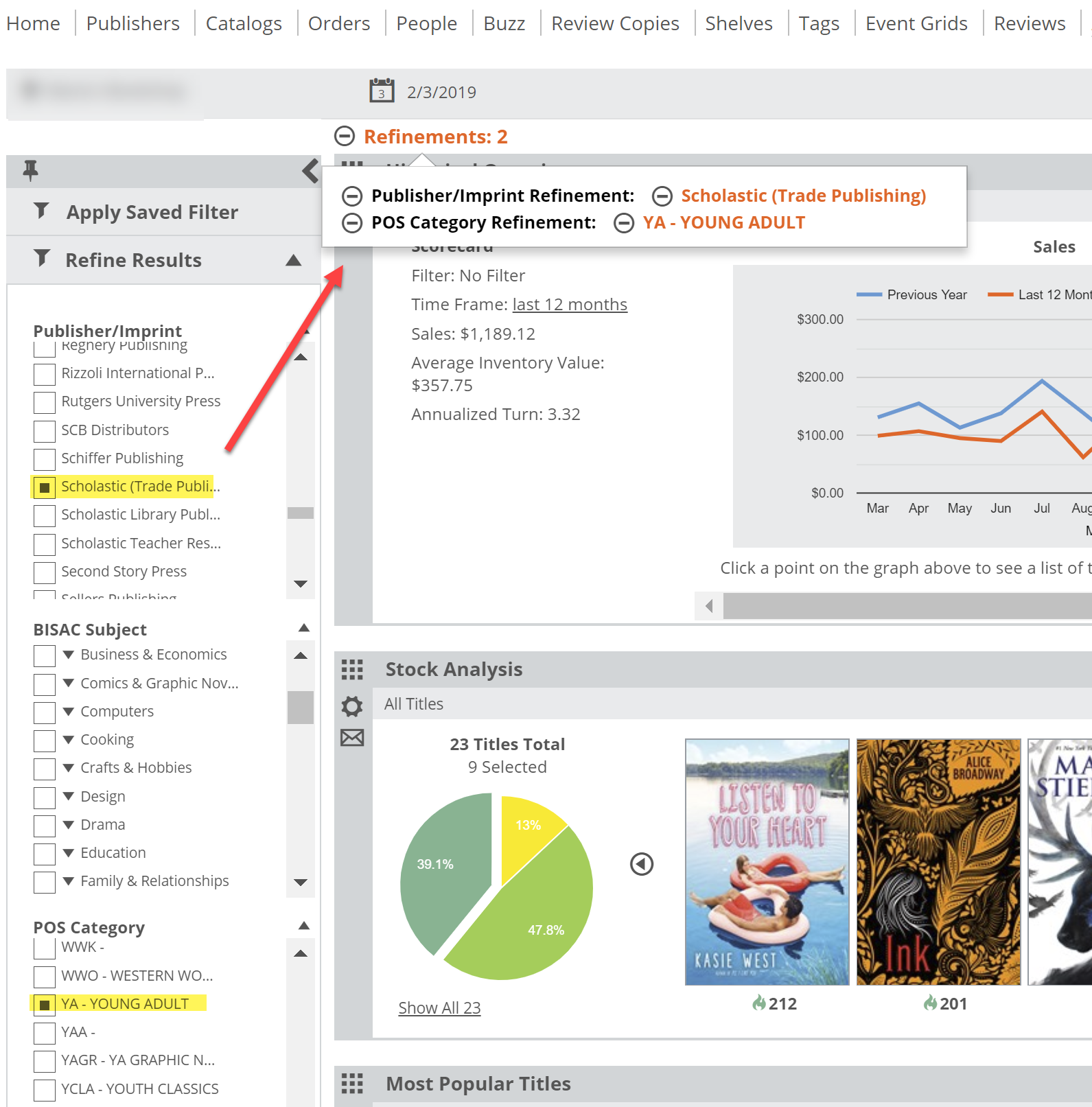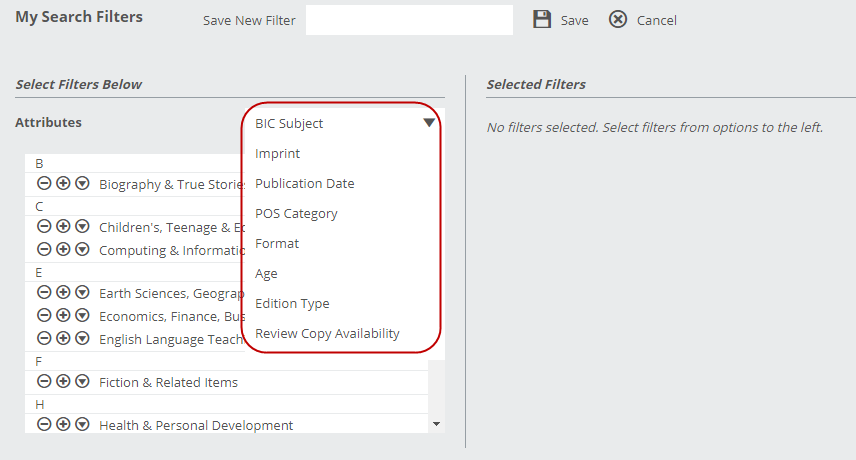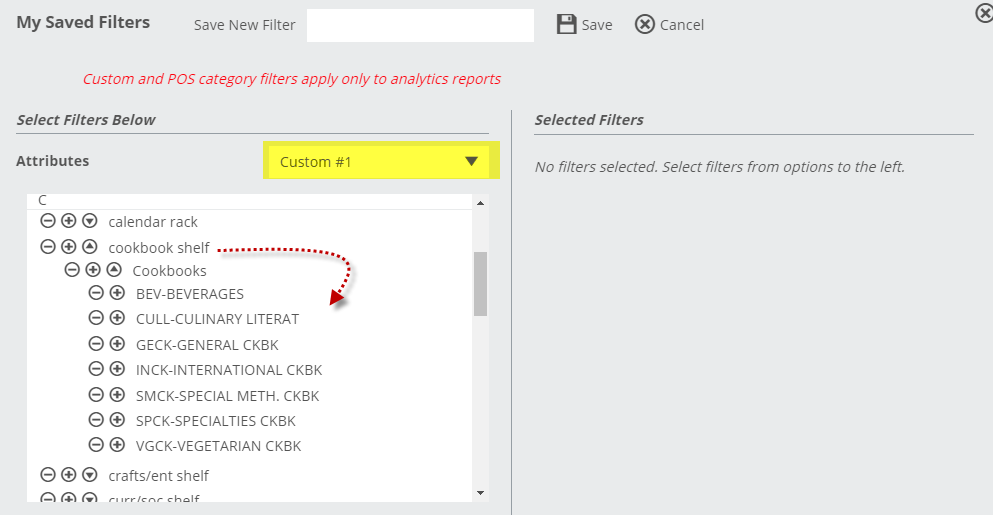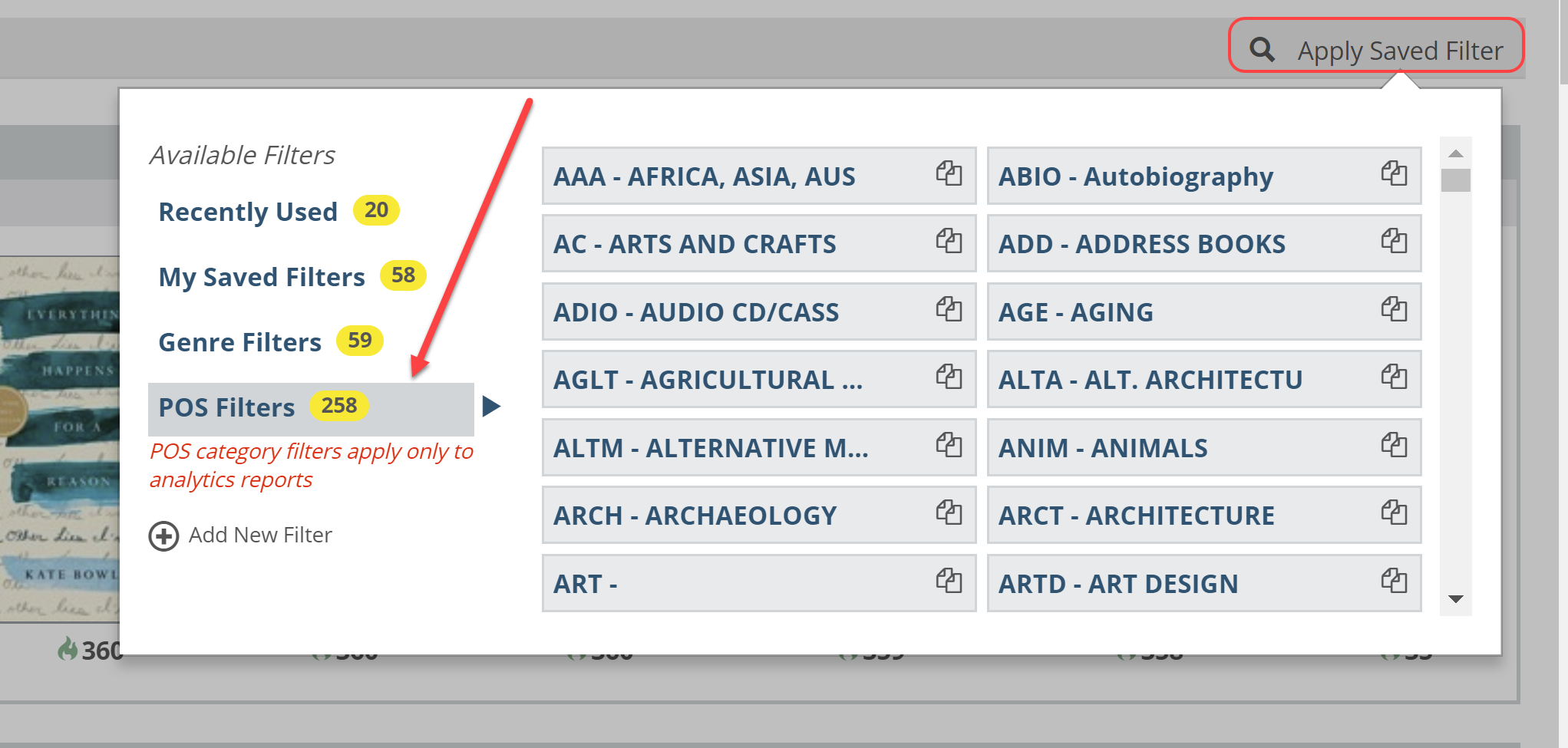There are a number of quick Refinement options available on the left hand side of your Analytics page. You can select a single refinement, say just a publisher or imprint, to quickly filter out everything else, or you can select multiple refinements at once… like HarperCollins and Fiction, for example, to see a more targeted set of titles in your various analytics graphs/tools. You’ll see options for Publisher/Imprint, BISAC Subject, your stores’ POS Categories, or your store’s Tags.
These “quick filters” can be very useful when you have a specific task in mind… “I wish to create a return pull list for Macmillan from my US History section,” for example. Or, “I have a Simon & Schuster rep coming tomorrow and want to create a solid backlist order for them to tack on to my frontlist order. I need to see what I’m missing!” Or, “How are my Scholastic YA titles performing? Am I buying aggressively enough? Too aggressive? Let’s see!”
For more complex or oft-used filtering needs, you can quickly create Saved Filters.
You can create an endless variety of Saved Filters to use throughout Edelweiss, including/especially within the Edelweiss Analytics tools. These can be a simple “Kids Only” filter that will only show kids titles, or a more complex “Hardcover Macmillan literary fiction that comes out next week,” or a more personal “My store categories that are back by the bathroom.” Essentially, you can create a filter to measure whatever you would like to measure, and then apply those filters to the many tools available to analyze the market and your own shop by those attributes. It might take a bit to get all your desired filters set up just as you want them, but then you’ll have a fully customized list ready to roll at a moment’s notice, from publishers, to formats, etc.
Click on Saved Filters at the top right of any Edelweiss screen, to be taken to a page from which you can create and view your filters. (See a complete tutorial about Saved Filters in Edelweiss here.)
Click on Add New Filter to create a filter set, or click Edit Filter to update or fine-tune an existing filter:
You can use a number of different parameters to create your filters, including Publisher/Imprint, Publication date, your shop’s POS category codes, (BIC Subject, for UK booksellers) or BISAC, Format, and more.
Click the + next to the elements you’d like to include, or the – next to the elements you’d like to exclude. The down arrow there will show you additional filters where relevant.
When it’s ready, simply name it and save it.
Once created, you can use that saved filter, wherever you like in Edelweiss. For our purposes here, you can especially use them when viewing the Analytics tools. Select a filter as shown below to apply that filter to each lane:
In the image above, this filter includes both Cycling and Travel Writing, so the Not Yet Released lane is showing the top 1000 upcoming cycling and travel writing titles, and whether this shop has them on order or not.
Alternately, this shop can see, within those cycling and travel parameters, how their stock is performing:
So, all on one page, you can see both upcoming and current cycling and travel titles that your shop is missing, as well as titles that are stale and could easily be returned to make room for titles that may sell better.
You can even share your Saved Filters with your colleagues. This is especially useful if you have a rather complicated set of filters that you’d like everyone on your team to use. Once a filter is created and saved, you’ll see this “Shared” option:
Filters that have been shared with you will show below your personal filters:
Those users who created custom categories using the “Aggregate Categories” feature in old (old) Treeline Analytics will find that those are available to use as Saved Filters in these new tools:
This might keep you veteran users from having to duplicate previous work. Note that these custom aggregated categories are static. If you do want to edit a custom category, you’ll want to just create a new Saved Filter set.
You can quickly find your POS categories to use as a filter, too!
Essentially, you have a bunch of preset filters you can use, and you can create your very own, so you can slice up and portion out your inventory just as you like. You can also use both the quick refinements and the Saved Filters at the same time, meaning you can set a saved filter and then apply quick refinements to that resulting list to bounce around and see what’s happening! As an example, below we have a saved filter for 2018 paperback titles, with a quick refinement for a publisher. You can quickly poke through that saved filter publisher by publisher to get details about performance, what’s missing, what should be returned, how each of your categories perform in comparison to each other, and more!














